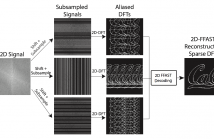ICASSP is the world's largest and most comprehensive technical conference on signal processing and its applications. It provides a fantastic networking opportunity for like-minded professionals from around the world. ICASSP 2016 conference will feature world-class presentations by internationally renowned speakers and cutting-edge session topics.

- Read more about Slides for Fast sparse 2-D DFT Computation Using Sparse-Graph Alias Codes
- Log in to post comments
- Categories:
 13 Views
13 Views- Read more about Poster for Nonstationary Blind Super-resolution
- Log in to post comments
- Categories:
 4 Views
4 Views- Read more about Tutorial Slides for Convex Optimization Techniques for Super-Resolution Parameter Estimation
- Log in to post comments
- Categories:
 56 Views
56 Views
- Read more about Graph Filter Banks With M-Channels, Maximal Decimation, and Perfect Reconstruction
- Log in to post comments
Signal processing on graphs finds applications in many areas. Motivated by recent developments, this paper studies the concept of spectrum folding (aliasing) for graph signals under the downsample-then-upsample operation. In this development, we use a special eigenvector structure that is unique to the adjacency matrix of M-block cyclic matrices. We then introduce M-channel maximally decimated filter banks. Manipulating the characteristics of the aliasing effect, we construct polynomial filter banks with perfect reconstruction property.
- Categories:
 43 Views
43 Views- Read more about A source/filter model with adaptive constraints for NMF-based speech separation [slides]
- Log in to post comments
- Categories:
 13 Views
13 Views- Read more about Speaker adaptive training in deep neural networks using speaker dependent bottleneck features
- Log in to post comments
- Categories:
 16 Views
16 Views- Read more about CUED-RNNLM – An Open-Source Toolkit for Efficient Training and Evaluation of Recurrent Neural Network Language Models
- Log in to post comments
In recent years, recurrent neural network language models (RNNLMs) have become increasingly popular for a range of applications including speech recognition. However, the training of RNNLMs is computationally expensive, which limits the quantity of data, and size of network, that can be used. In order to fully exploit the power of RNNLMs, efficient training implementations are required. This paper introduces an open-source toolkit, the CUED-RNNLM toolkit, which supports efficient GPU-based training of RNNLMs.
slides.pdf
- Categories:
 16 Views
16 Views
We introduce in this paper the recursive Hessian sketch, a new adaptive filtering algorithm based on sketching the same exponentially weighted least squares problem solved by the recursive least squares algorithm. The algorithm maintains a number of sketches of the inverse autocorrelation matrix and recursively updates them at random intervals. These are in turn used to update the unknown filter estimate. The complexity of the proposed algorithm compares favorably to that of recursive least squares.
- Categories:
 18 Views
18 Views- Categories:
 2 Views
2 ViewsIn this work, a directional modulation-based technique is devised to enhance the security of a multi-antenna wireless communication system employing M-PSK modulation to convey information. The directional modulation method operates by steering the array beam in such a way that the phase of the received signal at the receiver matches that of the intended M-PSK symbol. Due to the difference between the channels of the legitimate receiver and the eavesdropper, the signals received by the eavesdropper generally encompass a phase component different than the actual symbols.
- Categories:
 14 Views
14 Views